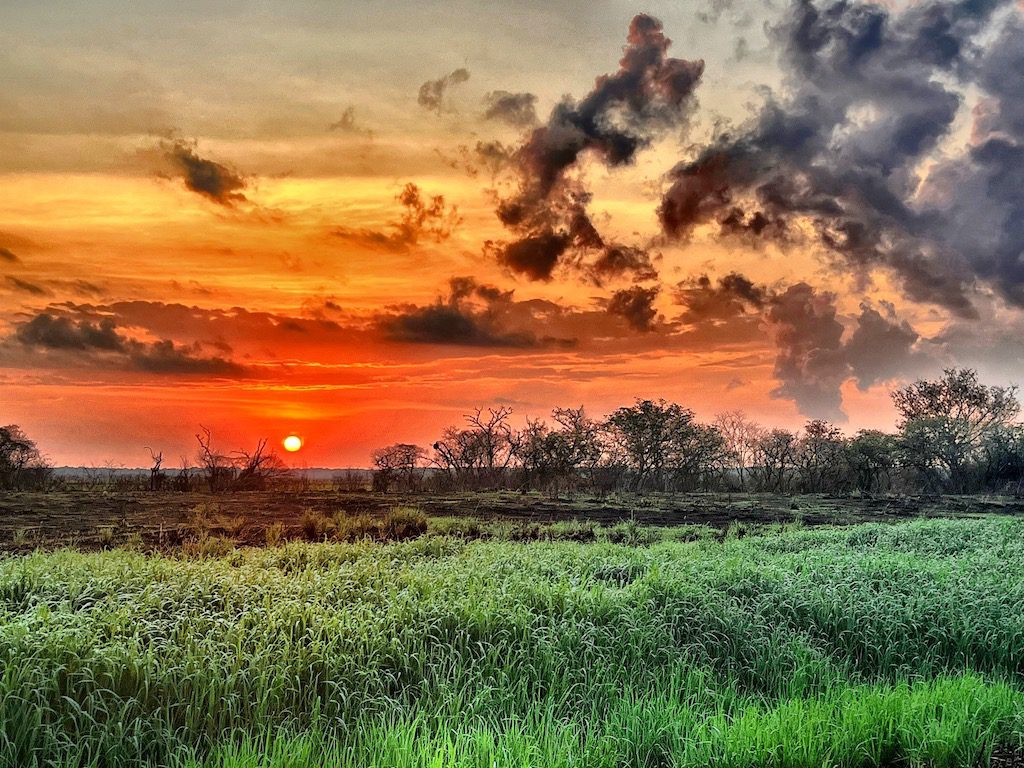Wandering Whistling Duck
The Wandering Whistling Duck (Dendrocygna arcuata) is a captivating waterfowl species native to Australia, Southeast Asia, and the Indian subcontinent. Also known colloquially in Northern Territory, Australia as “red whistler,” this medium-sized duck is recognized for its distinctive markings, unique vocalizations, and nomadic habits.

Adult Wandering Whistling Ducks display a striking appearance with a mottled brown and white plumage. Notable features include a bold white eye-ring and distinct facial markings, enhancing their visual appeal. The wings are adorned with contrasting black primary feathers. Elongated flank feathers about half as long as their plumed whistling duck associates, and not nearly as distinctive. Unlike traditional quacking ducks, these birds are known for their soft, whistling calls, contributing to their name.
Wandering Whistling Ducks inhabit a variety of wetland habitats, including freshwater lakes, ponds, and marshes. Their range spans from Australia and Southeast Asia to the Indian subcontinent. These ducks exhibit a nomadic lifestyle, often moving in response to changing water levels and food availability.

Primarily herbivorous, Wandering Whistling Ducks feed on aquatic plants, seeds, and small invertebrates. Their feeding behavior involves dabbling and grazing on the water’s surface, utilizing their specialized bills to filter and sift through food particles.
Available Hunts
Breeding typically occurs during the wet season. These ducks construct nests in dense vegetation, and the female lays a clutch of eggs. Both parents actively participate in incubation and care for the ducklings upon hatching, emphasizing cooperative parenting within the species.
Wandering Whistling Ducks are highly social birds, often forming large flocks, especially during the non-breeding season. Their group dynamics play a crucial role in navigation, foraging, and protection against predators. Social interactions are reinforced through soft, whistling calls, contributing to the cohesion of the flock.
The distinctive soft whistling calls of Wandering Whistling Ducks are a key element of their communication. These vocalizations serve multiple functions, including coordinating movements within the flock, signaling danger, and maintaining social bonds.
The Wandering Whistling Duck is generally considered widespread and secure in its range. However, localized threats such as habitat loss, pollution, and hunting may impact certain populations. Conservation efforts focus on maintaining and preserving the diverse wetland habitats crucial for the species’ survival.
Wandering Whistling Ducks stand as an intriguing waterfowl species, showcasing a blend of distinctive features, nomadic habits, and cooperative social behaviors. Understanding their ecological roles within wetland ecosystems underscores the importance of conservation initiatives to ensure the continued well-being of this captivating duck species. Thanks to pro-hunting groups in Australia, such as Field and Game Australia, and to local hunters fro putting their time and money towards waterfowl conservation there.
RED WHISTLERS. Quarter-mile walk through sun-baked wild pig and water buffalo wallows to the waters edge Seated in waist-high grass when in the hot coals bed to the east rose the fireball sun, reminder that temps would soon be soaring well into hades. Endless bird life river flowing overhead to include magpie geese, various ducks, all the while my friend Glen Falla narrating. Besides visiting me Aussie mates who’d not been seen since before the world shut down, there were 3 bucket-list reasons. First crack of the morning scratched number 2 for the trip—a beautiful Wandering Whistling Duck, or “red whistler,” as they’re colloquially called. Found in northern Australia and the South Pacific, they have dark fulvous-like upper bodies, dark caramel chests. Their flank feathers are beautifully elongated, their upper wing coverts strikingly cinnamon, dark gray bills and feet. Strongly associated with wetlands, where, judging from their crops, they feed on sedges and lily pad seed. A magpie goose limit was soon had, enjoyed watching nearby Radjah shelducks (the only shelduck species lacked worldwide) and green pygmy geese both of which are protected. Crocodile Dundee doesn’t have anything on red bearded Dwayne, who cheerfully braves local waters with a fishing pole to recover downed birds, and is an absolute crack shot like most of these ozzie duck hunters. Elated to have scratched 2 bucket-list species in 2 days, had unloaded and prepared for the sweaty walk out when more whistlers came in tall waves washing over the wetland from distant grasslands.








